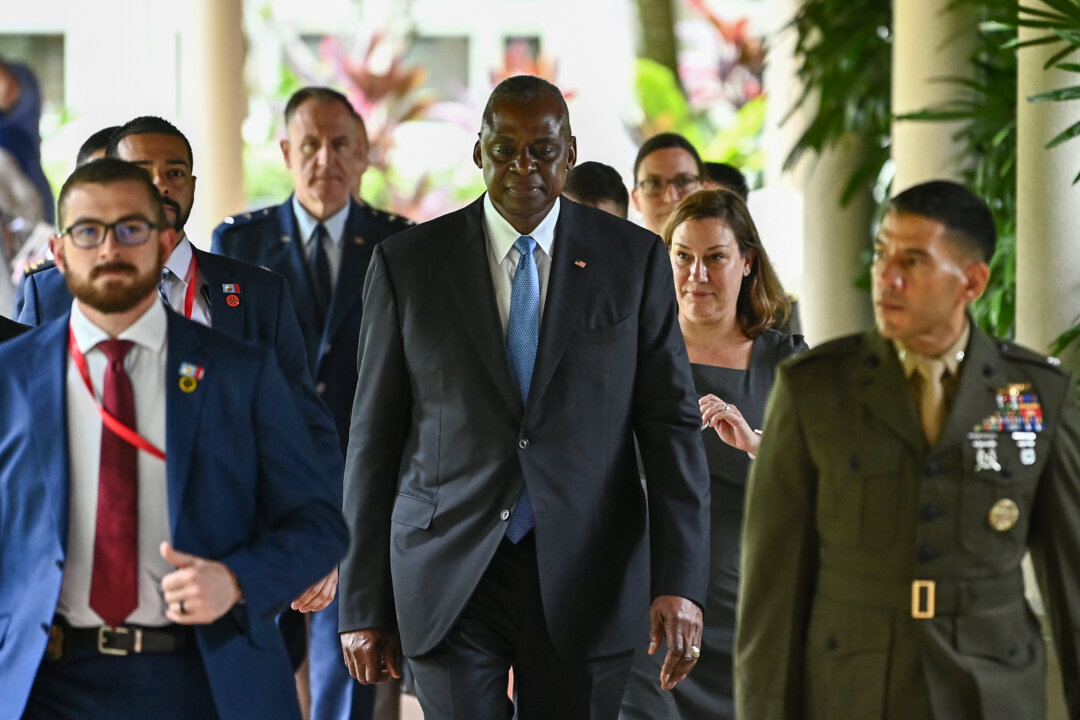Commentary
The 21st annual Shangri-La Dialogue (SLD), a premier Asia-Pacific defense summit, convened this year in Singapore from May 31 through June 2, attracting representatives from twenty-eight nations. A focal point of the event involved the mounting tensions between the United States and China regarding the Taiwan Strait. Defense chiefs from both countries engaged in direct discussions but remained far apart in their positions, often clashing. Speculation arose as to how both sides might collaborate in de-escalating the conflict arising from China’s threat of dominance over Taiwan versus that country’s desire to maintain its sovereignty.
China’s Hardening Stance on Taiwan
During the recent SLD, Chinese Defense Minister Dong Jun delivered incendiary remarks regarding Taiwan, asserting that “Any attempt to split Taiwan would result in utter destruction.”
Yao Cheng, a former Chinese naval lieutenant col., expressed his concerns about the risk of war in the Taiwan Strait intensifying during a televised interview with “Pinnacle View.” He pointed out that Dong Jun’s belligerent rhetoric was further echoed by generals from China’s National Defense University and other officials, indicating a hardened stance.
He provided insight into China’s strategic preparations. According to Mr. Yao, after a 2019 study by the Central Military Commission (CMC) on reunifying Taiwan by force, a series of actions were undertaken to target key cities such as Taipei and Kaohsiung. The plan involves the concentrated arrival of Chinese troops to capture these cities and establish a provincial government in Taipei, relocating the temporary government from Fujian. Recent military exercises to perfect this plan have been successfully executed, according to Mr. Yao.
Mr. Yao believes China has reinforced its plans to include the take-over of the two additional cities of Yilan and Hualien, countering the potential of joint landings by the United States and Japan. This adjustment was reflected in the proximity of recent exercise zones to these areas.
He claims that China’s plans for military action will be implemented in three phases: First, impose a blockade around Taiwan, gradually escalating tensions to provoke a response, thus giving China the pretext to claim self-defense domestically and internationally; second, launch long-range attacks targeting military facilities; finally, initiate landing operations to establish the local government.
He said: “Dong Jun’s speech is pivotal in mobilizing domestic support for potential conflict within China, aiming to unify the sentiments of the military, public, and Chinese Communist Party (CCP). However, these portions have not been entirely cohesive.”
He continued: “A second aspect of China’s war preparations involves forming a command system. Significant adjustments to the Military Commission are anticipated after the 20th Party Congress’s third plenary session in July, emphasizing the importance of strong naval representation and coordination for multi-force, multi-weapon operations. Recent developments indicate preparations are underway for such a command structure, signaling the impending military action against Taiwan.”
US Reaffirms its Indo-Pacific Strategy
During the “Pinnacle View” program, Shi Shan, an editor, and columnist for The Epoch Times, claims there was a notable shift in focus during the SLD summit towards the Asia-Pacific region, particularly the Taiwan Strait and the South China Sea. Notably, the United States has firmly tethered its national security to this region. During his address, U.S. Defense Secretary Lloyd Austin stressed, “The United States can be secure only if Asia is secure,” a sentiment Mr. Shi believes amplifies the paramount importance of the region, even surpassing Europe in strategic significance.
Ms. Terry Wu, a senior reporter for The Epoch Times in Washington D.C., commented on the evolution of the U.S. Indo-Pacific strategy on the “Pinnacle View.” Initially launched during the Trump administration in 2019, this strategy has received consistent prioritization, continuing with the Biden administration’s Indo-Pacific strategy in February 2022. Although the world is focused on the Ukraine conflict, Mr. Austin reiterated the United States’s enduring commitment to safeguarding the security and prosperity of the Asia-Pacific region, a “core principle of U.S. national security policies.”
Based on information she received from a senior VP for the Center for Strategic International Studies (CSIS), Ms. Wu said that “while the U.S. has yet to formalize a global alliance specifically targeting China, several countries have indicated a preference for aligning with the U.S. over China if compelled to choose. This stance presents a significant challenge for China, a notion further accentuated when a Chinese officer publicly queried Mr. Austin about the potential formation of a ‘NATO in the Indo-Pacific.’”
Ms. Wu raised concerns regarding the contraction of the U.S. defense industry, with 90 percent of missiles coming from three sources and a shift to just-in-time production, minimizing inventory. Recognizing the vulnerability of raw material supply chains, often controlled by China, the U.S. Department of Defense introduced a defense industrial strategy to strengthen domestic production capabilities. During the recent SLD, the United States emphasized collaboration with Indo-Pacific defense industries, including missile defense frameworks with Japan and Australia and joint fighter jet engine production with India.
Predicting the Timing of Attacks on Taiwan
Mr. Yao predicted on the “Pinnacle View” that the most likely time for China to attack Taiwan would be between 2025 and 2027 since 2027 marks a significant milestone for the CCP. It is the 21st Party Congress and the centenary of the Chinese military PLA. The period also aligns with political shifts in Taiwan, with the potential reelection of Taiwan’s President, Lai Ching-te, in 2028, which China is determined to prevent. The U.S.’s current political and economic turmoil, alongside ongoing conflicts worldwide diverting U.S. attention, presents a strategic opportunity for China.
Mr. Shi concurs with this predicted timeframe, believing the increased war preparations within China, including economic and social controls, indicate a swift transition to a wartime footing. This context frames the SLD as a strategic posturing ground, with China’s participation aimed more at deception to buy more time.
“While we hope these predictions are incorrect and that China will not proceed with its plans against Taiwan, the signs point towards a highly volatile situation, with the risk of war looming closer,” he said.

